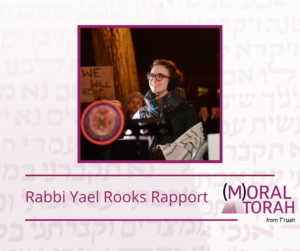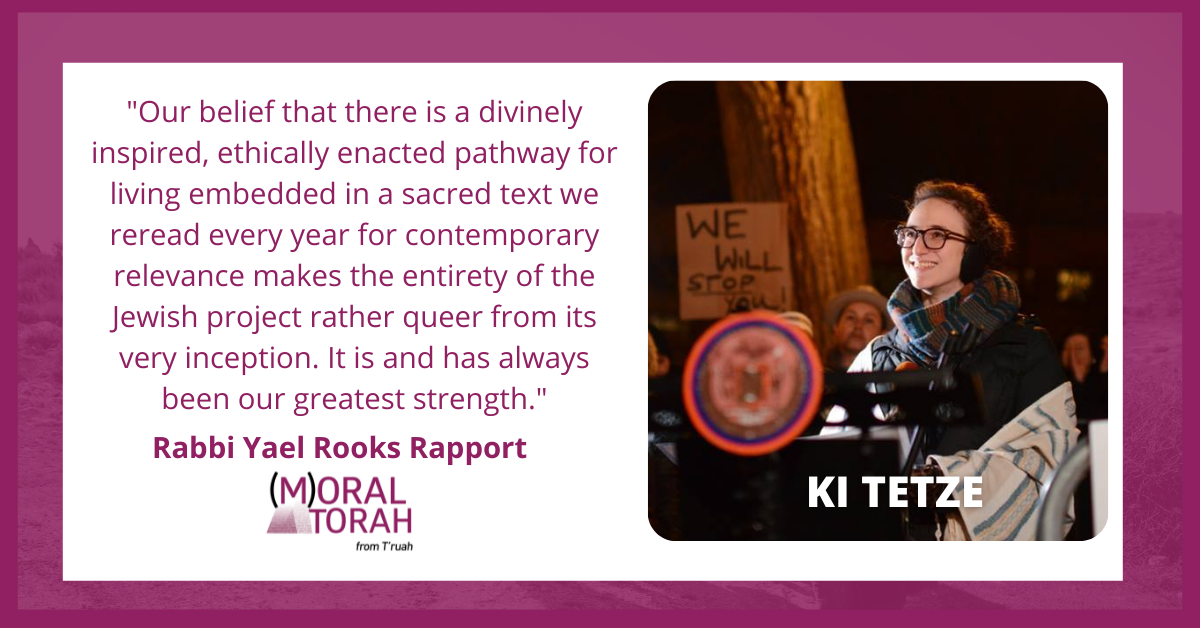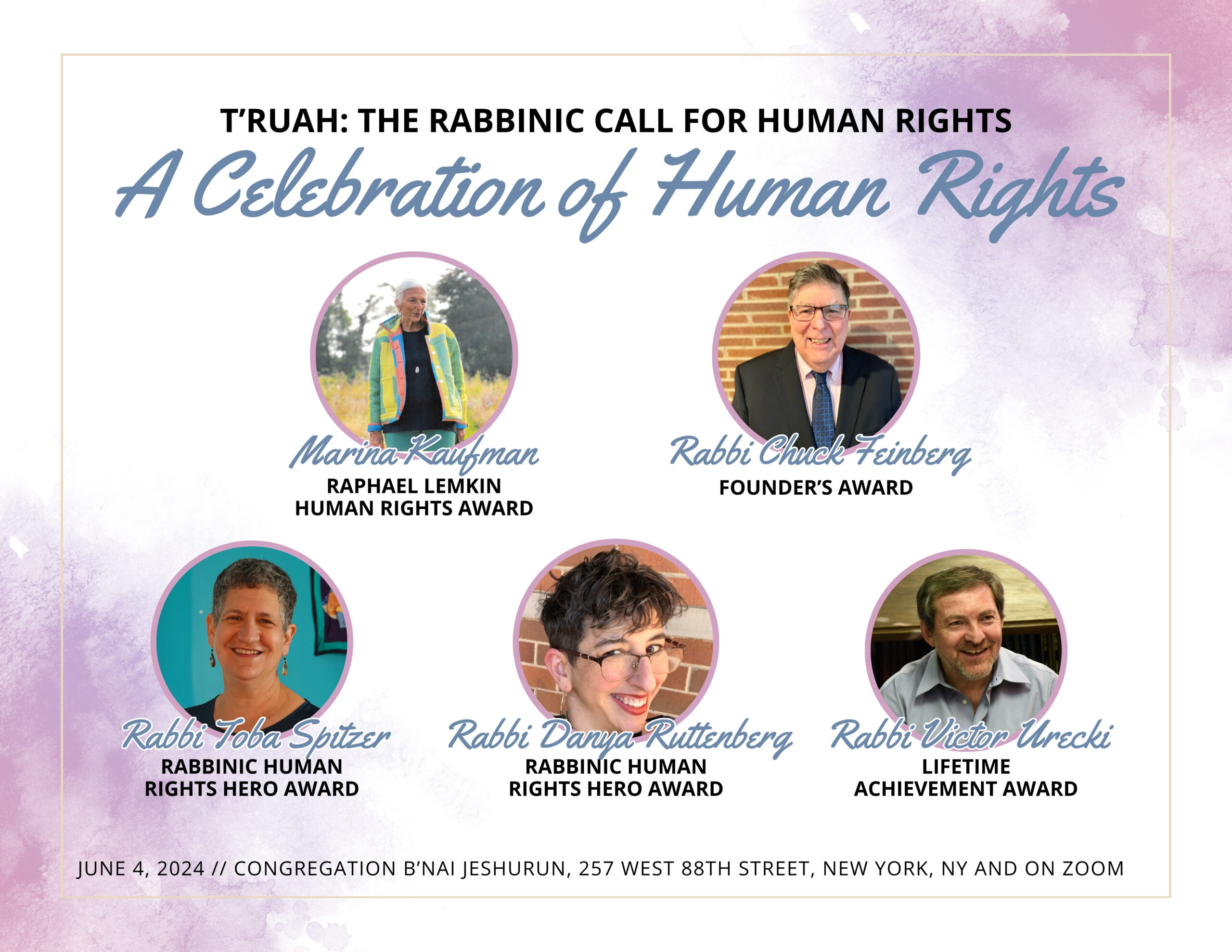A D’var Torah for Parshat Ki Tetze by Rabbi Yael Rapport
Parshat Ki Tetze is highly concerned with the careful categorization of quantities. This is a very mixing-averse parshah; it makes me think of my young toddler who is mortified when any two food groups touch on the carefully sectioned-off plate. In Deuteronomy 22, we are instructed not to mix our vineyards with two kinds of seed, not to have oxen and donkeys plow together, and the famous fashion statement of never mixing wool and linen.
However, earlier in the same section, we see what might be considered another prohibition against mixing categories that is the source text for an immeasurable amount of damage over history to LGBTQ, and specifically genderqueer people. Deuteronomy 22:5 states “A woman must not put on a man’s apparel, nor shall a man put on a woman’s clothing; for whoever does these things is an abomination unto the ETERNAL your God.” The word “abomination/to’evah” stands out specifically with its severity. To’evah is not a word the Torah throws around lightly; it represents a semantic field of actions that set off biblical taste receptors of moral disgust surrounding ritual and moral misdeeds. None of the previous “mixing” I described represents a “to’evah” — nor do the many descriptions of sexual assault that follow in this same parshah, which our contemporary society would (or at least should) describe as abominable. In point of fact, we now consider the choice of clothing a personal and validating choice. What would it mean to queer the meaning of such a line for blessing, which we might be tempted to reject or ignore for all the pain it has caused?
Sign up to receive (M)oral Torah in your inbox each week.
The beginning of such an interpretation may start much earlier in history than we would suspect, with Rashi’s medieval commentary. Regarding verse 22:5, Rashi zeroes in on what he believes is the possible motivation for such a choice:
A man’s attire shall not be on a woman: making her appear like a man, thereby enabling her to go among men, for this can only be for the [purpose of] adultery. Nor may a man wear a woman’s garment: to go and abide among women. Because… is an abomination: The Torah forbids only [the wearing of] clothes that would lead to abomination [i.e., immoral and illicit behavior].
Our other classical (and let’s be honest, cis-hetero-male-presenting as a representation of who held access to power in their age) commentators are very much in line with this understanding of 22:5 — that the prohibition is highly specific: misrepresenting our gender as a means to commit harm is the “abomination.” The to’evah is not actually the wearing of the clothes; in fact the Talmud clearly states on that matter “v’ein kan to’evah/there is no abomination here.” (Nazir 59a-b)
Find more commentaries on Parshat Ki Tetze.
To further illuminate our understanding of this line, we can look to provide a platform for great LGBTQ commentators and thought-leaders, who have been contributing to our chain of tradition throughout history and in our contemporary age, in spite of having been marginalized as a result of hate-fueled readings of this text. In their extraordinary essay, “To Wear is Human,” Rabbis Elliot Kukla and Reuben Zellman wrestle with this parshah for a blessing that can be derived from this prohibition. They encourage us to consider two questions as modern readers of this ancient text: What does it mean to cause harm? What does it mean to wear clothing of a gender we are not?
We return to the classical definition of the prohibition that one is forbidden to wear clothes that would lead to abomination, i.e. to circumstances of great and irreparable harm. Kula and Zellman write:
Transgender and genderqueer people who hide under the clothing of the gender they were assigned — rather than expressing themselves as they really are — suffer terrible harm.
We can flip mainstream understandings of our verse on their head and understand it as a positive mitzvah, a sacred obligation to present the fullness of our gender as authentically as possible. Unfortunately, not everyone is able to fulfill this mitzvah without endangering their life or livelihood, and the protection of human life always comes first in Judaism. However, the Torah wants us to be true to ourselves.
Read the fullness of this eloquent essay that is deeply rooted in classical perspectives, and read this verse with the possibility and expansion that queer Jewish perspectives have offered the evolution of our tradition since its very beginnings.  Our belief that there is a divinely inspired, ethically enacted pathway for living embedded in a sacred text we reread every year for contemporary relevance makes the entirety of the Jewish project rather queer from its very inception. It is and has always been our greatest strength.
Our belief that there is a divinely inspired, ethically enacted pathway for living embedded in a sacred text we reread every year for contemporary relevance makes the entirety of the Jewish project rather queer from its very inception. It is and has always been our greatest strength.
Some excellent resources for seeking out explicitly queer context of our tradition on our physical and online bookshelves include: A Rainbow Thread: An Anthology of Queer Jewish Texts from the First Century to 1969 by Noam Sienna; Torah Queeries edited by Gregg Drinkwater, Joshua Lesser, and David Schneer; TransTorah; and Jewish text and tradition resources from Keshet.
Yael Rapport is the Associate Rabbi at Congregation Beit Simchat Torah – The LGBTQ Synagogue of New York City. Follow this vibrant spiritual community on Twitter @CBST for a full spectrum of deeply traditional and progressive voices on Torah, activism, and LGBTQ/Jewish life.


